A well-planned landscape provides continuous, colorful inspiration as the seasons change. Autumn brings dramatic sweeps of brilliant color that last. As autumn colors fade, landscape plantings contrast starkly against winter whiteness to create a striking display of tree silhouettes, distinctive bark, colorful berries on shrubs and snow-dusted perennials rustling in the wind.
You can add late season drama to your landscape with the following perennials, shrubs, and trees that are proven performers in our area.
Perennials
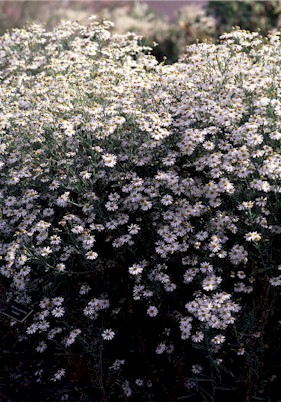
Snowbank Boltonia
Some of our late-blooming favorites provide a refreshing difference to the reds and golds commonly seen in autumn. For example, the tiny white flowers of Boltonia B. asteroids ‘Snowbank’ (4’) are reminiscent of spring daisies and have cheery yellow-green centers. This plant’s tall and sturdy growth makes it ideal for the back of the perennial bed, blooming September through October.
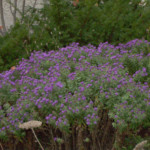
Purple Dome Aster
Glowing pinks and vibrant purples come from various cultivars of Aster. ‘Purple Dome’ or ‘Woods Purple’ (18”) which bloom with dramatic displays of purple with yellow centers. Asters start blooming in September and are suitable in the middle ground of a flower bed, to disguise their fading lower leaves.
Shrubs
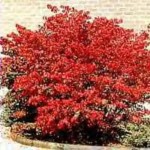
Burning Bush
The fiery red autumn leaves of Dwarf Burning Bush Euonymus alatus ‘compacta’ (5-6’) are truly dazzling on a sunny fall day. Its corky winged branches provide winter interest after the leaves have fallen.
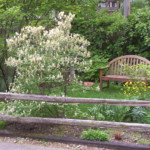
Fothergilla
Another fall favorite, the Dwarf Fothergilla Fothergilla gardenia (3’) radiates a warm fall glow as each and every leaf becomes a collage of yellow, red and orange. It tolerates shade nicely and, in spring, fragrant bottlebrush shaped white flowers appear.
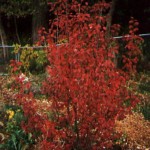
Blackhaw Viburnum
The Viburnum is a widely adaptable, shade tolerant shrub which offers spring flowers, full summer foliage and terrific fall color. ‘Blackhaw’ (12-15’) is a native viburnum that blooms with white flower clusters in spring. Leaves turn bronze to brilliant burgundy in autumn. Its showy, bluish-black berries offer birds food in winter. ‘Koreanspice’ Viburnum (5’) has spicy, sweet fragrant flowers blooming from late April through early May, with red to burgundy colored leaves in the fall. ‘Autumn Jazz’ Viburnum (8-10’) has shiny green leaves with creamy white flowers in late spring. Blue-black fruit follows in late summer. Fall foliage colors range from yellow to orange.
Ornamental Trees
A tree bares its soul in winter, as falling leaves expose its silhouette. Some tree species are especially dramatic, as their trunk bark exfoliates in curls and shreds that reveal subtle colors and textures. The following trees are outstanding exfoliating specimens in the landscape.
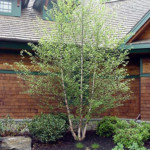
Heritage River Birch
The bark of Heritage River Birch Betula nigra ‘Heritage’ (35-40’), peels off in delicate curls, revealing a colorful inner bark that is almost a peach color. Resistant to the birch borer, which can attack other birches, it thrives in damp areas. Pretty yellow foliages appear in the fall and its delicate dark cinnamon-colored branches taper out to accentuate its vase shape.
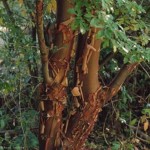
Paperbark Maple
As its name implies, the exfoliating reddish-brown bark of Paperbark Maple Acer griseum (15’) is an attractive feature. The bark begins peeling on two or three year-old branches. Upright and spreading, with a rounded crown, the leaves turn scarlet in autumn.
